


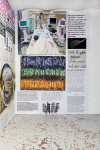
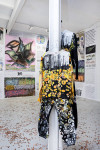
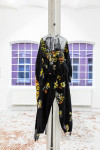







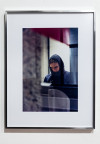
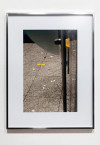
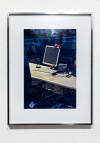
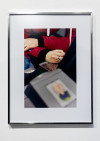
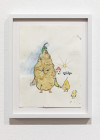

Elisabeth Greinecker, Meschac Gaba, Nicolás Guagnini, Martin Hotter, Annette Kelm, Kitty Kraus, Ilya Lipkin, Jonas Lipps, Cildo Meireles, Gunter Reski, Sarah Szczesny, Amelie von Wulffen
Geld und Psyche
The starting point of the exhibition is a reflection on the fact that money, although it is considered as unfeeling, neutral and calculable, has an impact on our psyche. The painter and writer Franziska zu Reventlow wrote in her epistolary novel “Der Geldkomplex” (1916) that existential fear and financial worries have a more negative effect on the psychological stability of humans than childhood experiences, for example. The show furthermore deals quite factually with money as an object and how an inherently valueless accumulation of material can attain value. For money must be used and authenticated. It must circulate and can fulfill its function, even if it is addressed to the individual, only when everyone believes in its stability of value. But that this credibility can be undermined is demonstrated by the what was said about the Jewish inhabitants of Jerusalem, who under Roman occupation refused to accept the newly minted and often changing coins, and simply continued to use their old currency. This bears an aspect of rebellion. Yet also inscribed in money is the ability to transform, since it can turn into all sorts of things whose value it initially only embodies. Money has an incalculable essence.
A further interesting aspect is the extremely ambivalent role that money plays in the field of art. On the one hand, it is a driving force that determines just about everything. Since art counts as a promising investment and speculation object, everything revolves around fundraising in American museums, and according to sociological studies, artists are mostly from financially better off social classes, implying nothing less than that one must be able to afford making or wanting to make art, both in financial terms and as a conceivable model of life. On the other hand, the role that money plays is quite conspicuously bracketed out and suppressed, because it ought to be insignificant when making art, it should be neither its reason nor its aim. Quite to the contrary, art is supposed to be a vocation and not a job. This credo goes hand in hand with the notion that such a praxis is incorruptible and independent of both institutional and economic systems of exploitation and therefore authentic, something that has always been at the center of what the market desires. All this amounts to an essentialization, a charging of art that makes it something more superior and sublime, locating it beyond material, meaning financial, spheres. From this perspective, it also becomes comprehensible why it is possible to trade with symbolic capital in the field of art (just as in other fields of cultural production). Yet this symbolic capital is converted only much later (if at all) into financial capital and is based on a collective guarantee in which one believes, but of which one does not know if it is sustainable. In this connectedness to an agreement going beyond the factual, symbolic capital then encounters money again.
Invited by Stefanie Kleefeld and Ulla Rossek.
Programme
»Children guide children« & »Children's Club« with Anna Prinz
Saturday, 24 November 2018, 10 – 12am
Workshop for children aged 6 to 12
»Unbezahlbar« – Inclusive book project with Anneliese Maas and Vision Inklusion
Saturday, 8 December 2018, 3 – 5.30pm and/or
Monday, 10 December 2018, 4 – 6.30pm
For children, teenagers and adults with and without disabilities
»Members guide« with Bernd W. Plake
Wednesday, 19 December 2018, 6pm
»Art and Cake « Special
Film screening
Sunday, 6 January 2019, 4.30pm
The exhibition ist generously supported by Stiftung Niedersachsen, Niedersächsische Sparkassenstiftung, Sparkassenstiftung Lüneburg, Land Niedersachsen and Hansestadt Lüneburg.
The framework programme is generously supported by Land Niedersachsen, LAGS and Lüneburger Bürgerstiftung.
Special thanks go to Sophie Hipp, Fürstenberg Zeitgenössisch, Donaueschingen, der Galerie Tanya Leighton sowie der Galerie Lars Friedrich.